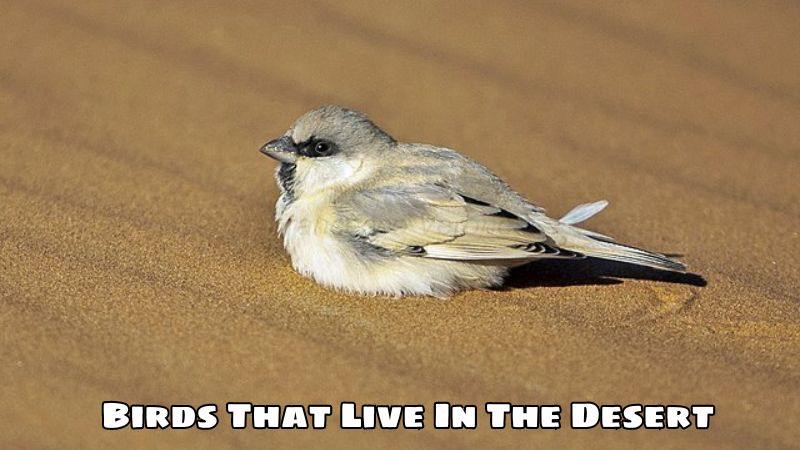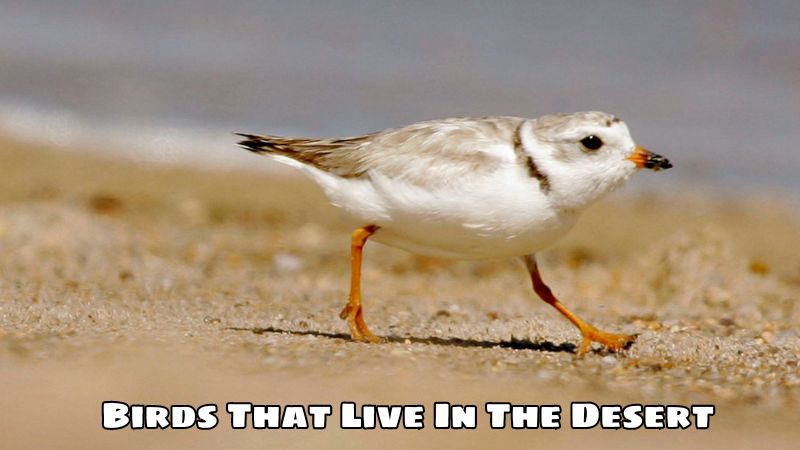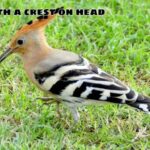Birds living in the desert often face the harsh challenges of arid environments and lack of water. However, they have developed special strategies to survive and adapt to these harsh living conditions. Birds such as cormorants, desert giants or geckos, have dark feathers to absorb sunlight and limit water loss. They are also capable of seasonal migration in search of more abundant food sources.
This shows the great diversity and adaptation of birds in the desert environment, one of the harshest environments on Earth.Let’s explore more deeply with Exoticbirdscorner about the characteristics of birds that live in the desert.
General characteristics of birds living in the desert
The desert – a harsh environment with a hot and dry climate, little rain and sparse vegetation – seems unlikely to be a habitat for any bird species. However, nature always contains miracles, and desert birds are proof of the strong vitality of life.
To survive and thrive in this harsh environment, desert birds have evolved unique characteristics that help them adapt to challenging living conditions:
1. Compact size:
This is a common characteristic of most desert birds. Small size helps birds save energy, move easily in hot conditions and limit dehydration.
2. Colorful:
The brilliant colors of desert birds have two main functions: camouflage and attracting mates.
- Camouflage: Some birds have brown, gray or sandy plumage, helping them blend into their surroundings, easily hiding from enemies.
- Attracting mates: Bright colors are also a powerful “weapon” for desert birds to attract mates, especially during the breeding season.
3. Long and pointed beak:
Long and pointed beaks are adaptations that help desert birds forage effectively in environments where food is scarce.
- Food: Desert birds usually eat insects, seeds, fruits and small animals that live in the sand. Their long and pointed beaks help them easily catch insects, peck seeds and forage in the sand.
- Body cooling: The long beak also plays an important role in regulating the body temperature of desert birds. When it’s too hot, birds will open their beaks wide to escape the heat.
4. Long legs:
Long legs help desert birds move easily on hot sand without getting burned.
- Movement: Long legs help birds stride wider, move faster on hot sand and stay away from predators.
- Keeps the body warm: The thick layer of feathers on the legs also helps keep the bird’s body warm at night, when desert temperatures are low.
5. Water storage capacity:
Some desert birds have the special ability to store water in their bodies, helping them go many days without drinking water.
- Kidneys: Desert birds have special kidneys that help filter and reuse water effectively.
- Behavior: Some desert birds can collect water from fog at night or fly hundreds of kilometers in search of water sources.
The miraculous adaptation of desert birds is a testament to the strong vitality of nature. Discovering the mysteries of the behavior and life of these brave birds will help us understand more about the diverse animal world and appreciate the magic of nature.

Some birds that live in the desert
1. Desert sparrow
As the most common bird in the desert, the desert sparrow possesses excellent adaptability to hot and dry environments.
- Compact size: Helps birds save energy and move easily in harsh conditions.
- Beak short and thick: Adapted for feeding on seeds and small insects.
- Short legs: Helps birds move flexibly on tree branches and the ground.
- Bright colors: Helps birds camouflage and attract mates.
2. Kestrel
This agile bird of prey is famous for its good eyesight and agile flying ability.
- Long and pointed wings: Helps birds fly fast and far.
- Big and sharp eyes: Helps birds see prey clearly from afar.
- Sharp claws: Help birds catch and tear apart prey.
- Living in pairs: Kestrels often live in pairs and hunt together.
3. Ostrich
This giant bird is the pride of the desert, famous for its ability to run fast and travel long distances.
- Huge size: Ostrich is the largest bird on Earth, with a height of up to 2.7 meters and a weight of up to 150 kg.
- Long and strong legs: Helps birds run fast at speeds of up to 70 km/h.
- Long neck: Helps birds see far and forage at high altitudes.
- Thick feathers: Helps birds keep their bodies warm at night.
4. Desert pigeon
This flock-living bird possesses an extraordinary ability to find water.
- Orientation ability: Desert pigeons can use the Earth’s magnetic field to navigate when flying.
- Remember location: Desert pigeons can remember the location of water sources and fly hundreds of kilometers in search of water.
- Living in flocks: Living in flocks helps desert pigeons easily protect themselves from enemies and share food with each other.
5. Desert owl
This nocturnal bird of prey has excellent vision in the dark.
- Large eyes: The desert owl’s eyes are large and have many rod cells, helping them see clearly in low light conditions.
- Sharp hearing: Desert owls have sharp hearing, helping them detect prey in the dark.
- Soft feathers: Soft feathers help desert owls fly smoothly and make no noise when hunting.
- Active at night: Desert owls are often active at night, when their prey is most easily detected.
The diversity and abundance of desert birds is a testament to the strong vitality of nature. Exploring the world of desert birds will help us learn more about the brave warriors who successfully conquered harsh habitats and contributed to the diversity of the desert ecosystem.
The important role of birds in desert ecosystems
Birds play an extremely important role in maintaining the balance and diversity of the harsh desert ecosystem. Below are some typical roles:
1. Control insect populations
Desert birds are effective insect “killers”, helping to protect trees and crops from insect damage. They eat a variety of insects, including those that damage crops and livestock. For example, swallows can eat up to 1,000 insects per day. Thanks to the insect control activities of birds, desert ecosystems are protected from negative impacts and maintain sustainable development.
2. Seed dispersal
Desert birds play an important role in dispersing plant seeds, contributing to the regeneration and maintenance of desert vegetation. When eating fruit, birds swallow the seeds and then excrete them elsewhere, creating conditions for the seeds to germinate and grow into new plants. This process helps spread tree species adapted to desert conditions, contributing to maintaining biodiversity in the ecosystem.
3. Food for other animals
Desert birds are an important food source for predators such as foxes, snakes, reptiles, etc. The presence of birds creates a balanced food chain in the system. desert ecology, helping to control the number of other animals and maintain environmental stability.
4. Tourism value
Desert birds contribute to attracting tourists to visit and boosting the local economy. Many tourists love watching and discovering unique bird species in the wild desert environment. Ecotourism activities associated with desert birds provide a source of income for local people, while contributing to raising awareness about the importance of environmental protection.
In general, birds play an essential role in the desert ecosystem, contributing to maintaining the balance, diversity and sustainable development of this harsh environment. Protecting desert birds is a shared responsibility of each individual and community, to preserve unique ecosystems and promote local economic development.
Epilogue
Desert-dwelling birds are excellent operators of adaptation and survival in harsh and arid environments. Not only have they developed special strategies to conserve water, but they are also able to regulate their body temperature to cope with large temperature variations from day to night. Besides, desert birds also play an important role in maintaining the ecological balance and biodiversity of this environment.
The study and protection of these birds not only helps protect living creatures but also provides important lessons about survival and adaptation in the harshest conditions on the planet.





